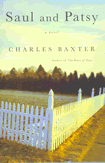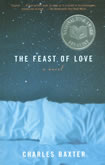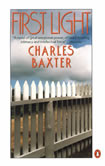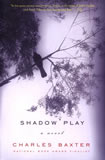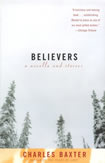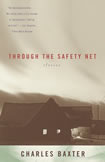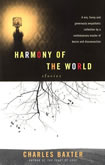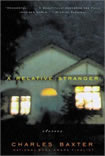|
||||||||
|
|
||||||||||
|
|
Charles Baxter
Fiction is a fickle fellow; one prone to taking on a life of its own. Case in point: Charles Baxter's forthcoming novel, Saul and Patsy. Baxter's follow up to his National Book Award finalist, Feast of Love, has its roots in two intriguing characters the author first put to paper nearly two decades ago. Being the subject of three previous short stories, Saul and Patsy, the young married couple in question, survived an apparent early death, got pregnant, and brought a child into the the made-up and mundane world of Fair Oaks, Michigan. But the whole story had yet to be told, until now. Recently, Baxter allowed failbetter to ask him just how this all came about, and why...
We know you’ve been asked this question about a billion times before, but for our readers’ sake… How did Saul and Patsy come to recover from their apparent demise at the end of the "Saul and Patsy Are Living Comfortably in Michigan"??? When you wrote the end of that story did you think, at the time, that the fate of these two characters was forever sealed? Yes, I thought their lives were over. I was a young writer and made a particularly egregious mistake: I thought that formally one could end the lives the main characters at the conclusion of a story. Perhaps some writers can manage that, but if you try to end their lives in an automobile accident, the architecture of the story will seem contrived, and their deaths won't seem accidental but arranged. That was what happened in "Saul and Patsy Are Getting Comfortable in Michigan." Several readers protested; one did so in public, physically, grabbing my lapel. So I decided that what I had done, I could undo. The story's final moment could be, not rewritten, but de-emphasized. You once confessed that when you started writing fiction many of your fictional characters were based upon on the sort of people you’d meet during your 20s and 30s…It’s been nearly 20 years since Saul and Patsy made their first appearance, can you even recall where the inspiration for these characters came from? Oh, certainly. I remember them very well, a married couple whom I knew in Pinconning, Michigan. I still have photographs of them. They were really not like Saul and Patsy, however. The imagination often takes over, begins to fill in, and then creates new outlines. Did you feel any new kind of pressure to follow up the success of your previous novel, Feast of Love? I understand that you were under no advance contract deadline when writing Feast of Love. Was this also the case with the new book? If not, did tapping into two already well-established characters help alleviate the natural compulsion to meet such a deadline? Or, did it have just the opposite effect? I always try to ignore contracts and deadlines. If I have something to say, I'll say it whether I have a contract for it or not. Sometimes a contract will goad me into writing, though that's not the best circumstance for writing a book. But, yes, I had a contract for this one, and by using Saul and Patsy, I had a set of characters whom I already knew, though I also recognized that I couldn't just coast along on their charm. Something had to happen. In terms of format, what we have here is definitely a novel, but given the original source, did you ever consider a collection of intertwined stories like Sherman Anderson’s Winesburg, Ohio or Tim O’Brien’s The Things They Carried as a possible means to tell the entire Saul and Patsy saga? No, because I didn't know what the Saul and Patsy saga was. I simply didn't know what their particular story would be. It starts out with their assimilation to small-city America, proceeds to Saul's unhappiness with his chronic unhappiness as a condition, then leads into their parenthood. But that's not much of a story. American nerves are frayed more than that, these days. It didn't have enough weight for a novel, or urgency, and I didn't want the book to seem episodic, which is usually a failure of technique. So I had to re-cast the entire thing. You’ve incorporated the original three S&P short stories so effectively within the new novel, but was this you intention from the start? Did you ever consider having the novel start before the established timeline of the first S&P story? Or maybe simply picking up where you left off at the end of "Saul and Patsy Are in Labor"? It was always my intention to use those three stories as the cornerstones for the novel. They gave me a place to start from. I figured that if I elaborated their lives for a novel, I'd have to concoct something for their earlier lives as backstory, and that's what happened. The new novel not only expands upon the S&P characters, but also upon the troubled teen, Gordy Himmelman. In the wake of Columbine and other such incidents, did you find it difficult to describe/use such a character without running the risk of sensationalizing the issue itself, or making him merely a symbol of a current ill in society? This is a hard question to answer. Gordy is troubled, and there is an episode of violence, but the novel does not provide a reason for its occurrence. All I did was to show it, not explain it. There is something in the air in American culture these days ("Something is happening to our children, and we don't know what it is"--that's a paraphrase for a character's outburst in Rick Russo's Empire Falls). You don't sensationalize an event like this if you're careful not to over-write it. The reader can't be allowed to enjoy the spectacle of the violence, either. Anyway, much of the novel is about the aftermath and about how members of the community cope with an event whose meaning seems always to be receding. So much of your fiction utilizes the backdrop of a seemingly mundane Midwestern life -- your fictional town of Fair Oaks almost epitomizes this idea. In reality, after a lengthy and productive decade in Michigan, you have recently returned to your home state of Minnesota. Is there much difference in your daily life within these two states? If there was a Fair Oaks, Minnesota, would it be that much different than Fair Oaks, Michigan? And is it safe to say that, "Charlie Baxter is Living Happily-Ever-After In Minnesota"? There is a difference. We're living in a city, Minneapolis--St.Paul, which is considerably larger than Ann Arbor. There is more to do in the evening. I think, though, that once a writer sets him/herself up as a writer, it may not make all that much difference where s/he lives. I'm not particular about where I live. My imagination's home is the Midwest, though what I write about shouldn't be construed as provincial, though I don't really mind if that's what readers think of it. William Maxwell once told me that after living for fifty years in New York City, he still wasn't a New Yorker. As for happily-ever-after, is there such a thing? OK… Before we let you go, I have to ask: is this the last we’ll hear for Saul and Patsy? Or do you think you may have inadvertently started the Midwest equivalent of Updike’s Rabbit series? Yes, that's the end of Saul and Patsy. I won't go back to them. Whatever is next, it's more likely to be veer in the direction of Saul's sociopathic brother, Howie. Saul is a 20th century American. Howie is an American for the 21st century. © failbetter.com |
||||||||||

